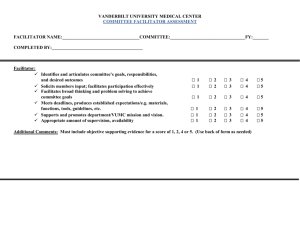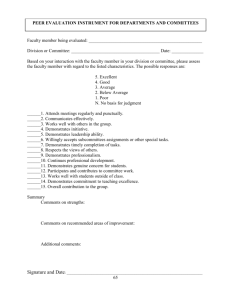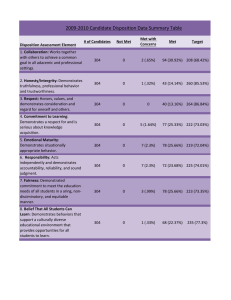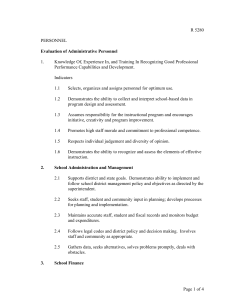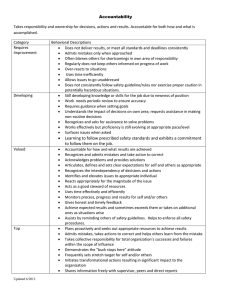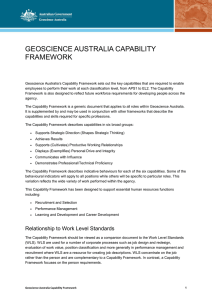The ULM Learning Facilitator…
advertisement
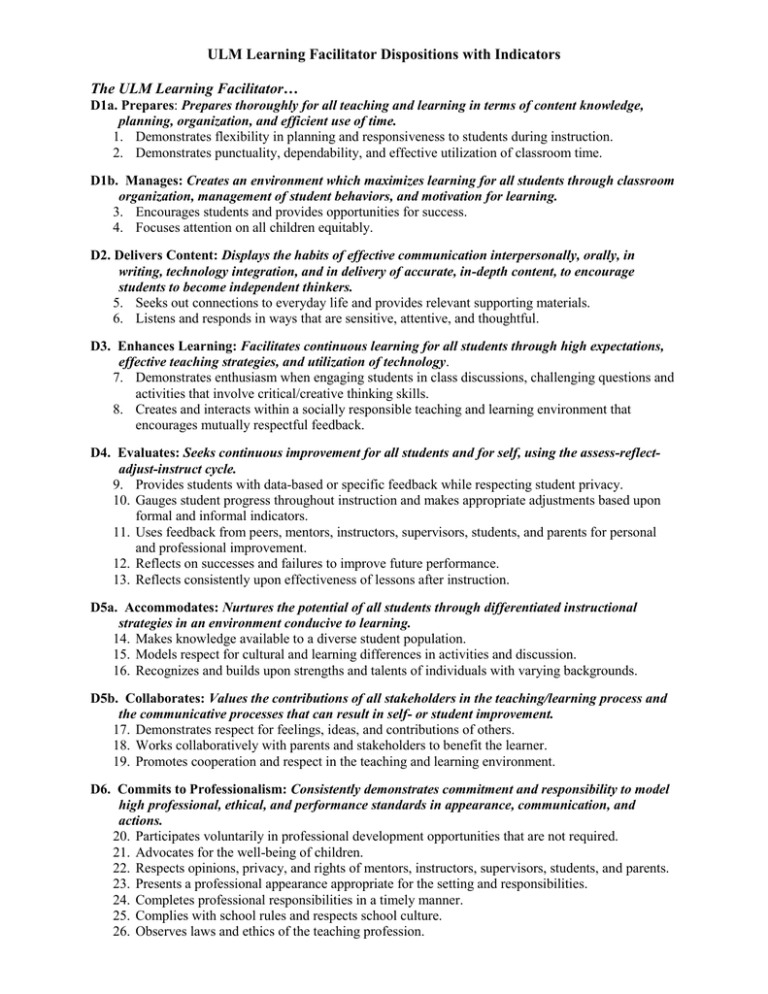
ULM Learning Facilitator Dispositions with Indicators The ULM Learning Facilitator… D1a. Prepares: Prepares thoroughly for all teaching and learning in terms of content knowledge, planning, organization, and efficient use of time. 1. Demonstrates flexibility in planning and responsiveness to students during instruction. 2. Demonstrates punctuality, dependability, and effective utilization of classroom time. D1b. Manages: Creates an environment which maximizes learning for all students through classroom organization, management of student behaviors, and motivation for learning. 3. Encourages students and provides opportunities for success. 4. Focuses attention on all children equitably. D2. Delivers Content: Displays the habits of effective communication interpersonally, orally, in writing, technology integration, and in delivery of accurate, in-depth content, to encourage students to become independent thinkers. 5. Seeks out connections to everyday life and provides relevant supporting materials. 6. Listens and responds in ways that are sensitive, attentive, and thoughtful. D3. Enhances Learning: Facilitates continuous learning for all students through high expectations, effective teaching strategies, and utilization of technology. 7. Demonstrates enthusiasm when engaging students in class discussions, challenging questions and activities that involve critical/creative thinking skills. 8. Creates and interacts within a socially responsible teaching and learning environment that encourages mutually respectful feedback. D4. Evaluates: Seeks continuous improvement for all students and for self, using the assess-reflectadjust-instruct cycle. 9. Provides students with data-based or specific feedback while respecting student privacy. 10. Gauges student progress throughout instruction and makes appropriate adjustments based upon formal and informal indicators. 11. Uses feedback from peers, mentors, instructors, supervisors, students, and parents for personal and professional improvement. 12. Reflects on successes and failures to improve future performance. 13. Reflects consistently upon effectiveness of lessons after instruction. D5a. Accommodates: Nurtures the potential of all students through differentiated instructional strategies in an environment conducive to learning. 14. Makes knowledge available to a diverse student population. 15. Models respect for cultural and learning differences in activities and discussion. 16. Recognizes and builds upon strengths and talents of individuals with varying backgrounds. D5b. Collaborates: Values the contributions of all stakeholders in the teaching/learning process and the communicative processes that can result in self- or student improvement. 17. Demonstrates respect for feelings, ideas, and contributions of others. 18. Works collaboratively with parents and stakeholders to benefit the learner. 19. Promotes cooperation and respect in the teaching and learning environment. D6. Commits to Professionalism: Consistently demonstrates commitment and responsibility to model high professional, ethical, and performance standards in appearance, communication, and actions. 20. Participates voluntarily in professional development opportunities that are not required. 21. Advocates for the well-being of children. 22. Respects opinions, privacy, and rights of mentors, instructors, supervisors, students, and parents. 23. Presents a professional appearance appropriate for the setting and responsibilities. 24. Completes professional responsibilities in a timely manner. 25. Complies with school rules and respects school culture. 26. Observes laws and ethics of the teaching profession.
